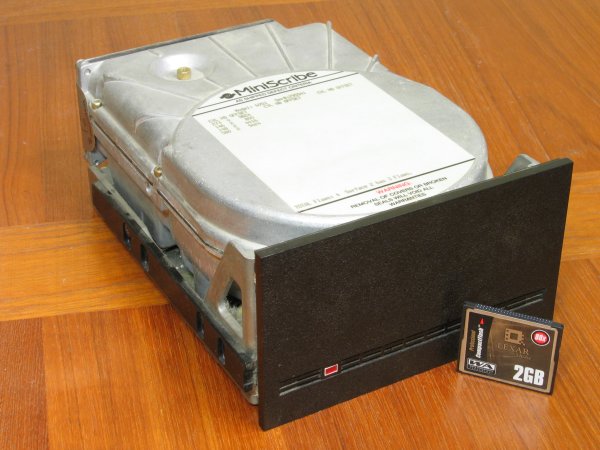The Third Little Pig’s Guide to Computer Hardware

In the mid-1980s, computer hardware was a good industry to be in. Corporations the world over were beginning to introduce the power of the desktop computer to their employees and at rapid rates, and all of those computers needed parts — keyboards, monitors, and ways to store data. A company named MiniScribe was in a great position to thrive — they made hard drives like the one pictured above. At the time, hard drives were almost unheard of: everyone stores their data in removable hardware like floppy disks. MiniScribe dominated the hard drive market and when the company went public in 1983, investors had high hopes. But MiniScribe’s day in the sun didn’t last. Within a few years, its main customer, IBM, cut back on orders as they pivoted to building their own drives. Once a darling of the emerging computer space, MiniScribe looked like it was in trouble.
So in 1985, the company decided to make a change. It hired a new CEO, Q.T. Wiles, known in the industry as a turnaround artist after saving other companies from doom. And under Wiles, MiniScribe seemed to thrive, hitting $185 million in revenue in 1986 and then nearly doubling that the next year, reporting revenues of $365 million in 1987. Things were looking up, and Wiles predicted revenues of $660 million in 1988. It wasn’t to be. Demand for hard drives softened — and it became clear, at least to many internally at MiniScribe — that Wiles’ revenue projections were overly ambitious and not all that realistic.
So, employees started shipping bricks.
And no, that’s not a euphemism for a PG-13 colloquialism. MiniScribe literally shipped bricks.
MiniScribe’s early rebound, starting in 1985 and into 1986, was likely legitimate. But as 1987 approached, leaders at the company — it’s not to what extent Wiles himself was involved — realized that the company wasn’t doing nearly as well as Wiles had stated. And news of that was almost certain to emerge; as a public company, MiniScribe was required to have an independent accounting firm audit their books, and that audit was just around the corner. At first, people at the company simply fudged the numbers, inflating inventory by about $15 million worth of drives — and that caused a new problem. Ultimately, the executives realized, the auditors would visit the warehouses and see that there were no drives there. So, they faked it. Hackaday explains what happened next:
They leased a warehouse to hold the fraud inventory and filled it with bricks. Real bricks like you use to build a house. Around 26,000 bricks were packaged in boxes, assigned serial numbers, and placed on pallets. Auditors would see the product ready to ship and there were even plans to pretend to ship them to CompuAdd and CalAbco, two customers, who had agreed to accept and return the bricks on paper allowing them to absorb the $15 million write off a little at a time.
The plan worked — at least at first. MiniScribe was able to show increased inventories and revenues, and no one was the wiser. They bought themselves time to take a failing company and turn it into a successful one. But unfortunately for them and their shareholders, they were unable to actually fix the business — and, by inflating their numbers via the brick scheme, actually made the problem worse. The company kept piling fraud on top of fraud, as the Los Angeles Times explained; in 1987, “obsolete parts were shipped to Singapore and Hong Kong and, with scrap and other parts at those locations, were repackaged or relabeled as active parts and then included in the 1987 inventory at a value of $8.9 million,” and “during the 1988 fourth quarter, 6,100 disk drives were found to be contaminated. The drives were counted during the physical inventory and included in inventory at full value,” among other lies.
The fraud had its limits, though — toward the end of 1989, MiniScribe was dangerously low on cash and ultimately unable to pay its employees. Unsurprisingly, the company went bankrupt in 1990. Wiles claimed he was unaware of the fraud under his watch, but a jury found otherwise, and he was sentenced to prison in 1994.
Bonus fact: The MiniScribe drive pictured above held about 44 megabytes of data — which isn’t a lot. If you have an iPhone, you probably have at least 2,500 times the amount of space in your pocket — a typical iPhone has 128 gigabytes or more space on its hard drive. And that amount of space was virtually unfathomable in 1980. That year, according to PC World, IBM released the first ever 1 gigabyte hard drive. The drive was “the size of a refrigerator, weigh[ed] about 550 pounds, and cost[] $40,000” — or about $150k in today’s dollars.
From the Archives: There’s No Such Thing as a Lot of Free Pennies: Another case of computer fraud, but in the more traditional sense of “using computers to commit the fraud.”
